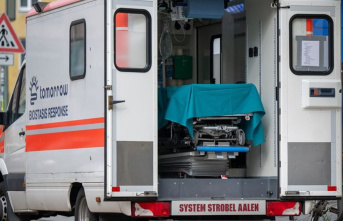Infineon has had to adjust its forecast downwards for the second time this year. After a weak second quarter with a slump in profits, the company now expects lower sales and lower margins, as it announced on Tuesday in Neubiberg near Munich. CEO Jochen Hanebeck spoke of a “persistently difficult market environment”. Infineon now wants to save money.
In the second quarter, Infineon made a profit of 394 million euros, which was less than half of the value from the same period last year. Sales fell by almost half a billion to 3.6 billion euros.
After a good phase, several negative developments are coming together for Infineon: "Many end markets are developing weakly due to the economic situation and the reduction in semiconductor inventories among customers and distributors is continuing. The weak demand for consumer-related applications is dragging on," explained Hanebeck. "We are also seeing a noticeable slowdown in growth in the automotive sector. We are therefore cautious about the rest of the financial year and are reducing our forecast."
It is already the second rowing back: After the first financial quarter, Infineon reduced its forecast from around 17 billion to 16 billion euros plus or minus 500 million. Now the outlook fell further to 15.1 billion - plus or minus 400 million. And the resulting margin is also expected to be worse. As a result, Infineon also wants to reduce its investments somewhat.
Infineon also announced a company-wide program called “Step Up” that is intended to improve the cost structure. Hanebeck only gave a few details and also left it open whether it would be accompanied by job cuts. However, the assumption is obvious: possible effects on employees will first be communicated to them in the coming days and weeks, he said. One area the company wants to address is operating costs, particularly efficiency in the central and support functions.
Larger divestments - such as sales or closures - are not planned, said Hanebeck. He also acknowledged the expansion plans for the plants in Dresden and Kulim. In principle, the structural growth drivers for Infineon are intact, he emphasized. In some areas he now sees the bottom as having been reached. However, the austerity program should continue even in an improving market environment. It should show the first results in 2025 and come into full effect from 2027.












